Amanda Murphy – Digital Producer, ADAPT
I’ve worked in television for over 25 years since the mid 80’s having filmed with such varied folks from Hollywood greats like Elizabeth Taylor, Frank Sinatra and Tony Curtis to the very first Big Brother contestants and Supernanny Jo Frost… but nothing has ever felt so life affirming and heart warming as the filming I‘ve just done for the ADAPT project with a group of seven utterly awesome (mainly) octogenarians who all once worked at BBC Ealing film studios.
We are focusing on 16mm filming on location for TV – so documentaries, topical current affairs shows like Man Alive and Chronicle as well as Play for Today along with a raft of 60’s and 70’s shows as the BBC film unit covered all programmes shot on film on location. Crews then had to be multi-skilled as they often had to shoot a drama one week and a schools programme or jungle based documentary the next.
So I blink in disbelief at having pulled this off…as Ray Sutcliffe (once editor of BBC flagship series, Chronicle) David Whitson cameraman (and DOP) looking boyish still in retirement (made Man Alive and series like The Voyage of Charles Darwin ) John Adderley acting as camera assistant (Tribal Eye, Man Alive) Alex Branson PA, Bill Chesneau on sound, John Hooper as sound assistant and Alan Muhley electrician, all walked into shot carrying the Éclair camera, magazines for loading film, a Nagra 3 sound recorder and an old DK25 boom, a hefty wooden camera tripod and various redheads and blonde lights from the era, it felt a bit like a Fellini film! The combined age of the crew was likely somewhere around 600 yet this seasoned crew from the 60’s and 70’s worked together like they’d just made a telly programme yesterday!
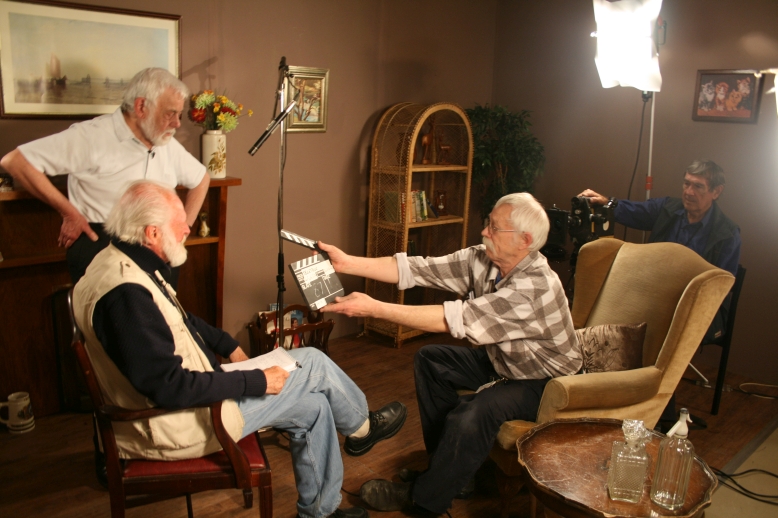
And while I’ve got one eye on the participants as they join forces to film once again with a 16mm camera kit, I’ve got the other on our student crew from Royal Holloway University (where the Adapt project is based) who have been selected as they have shown exceptional talents on camera and sound but who are barely 20… and as I stand in the middle, both professionally and age wise, it’s one of those defining and memorable moments. Pivoting between the young learning from the old, learning from the young as I learn from both and feel blessed that I was given this great job as Digital Producer on the project!
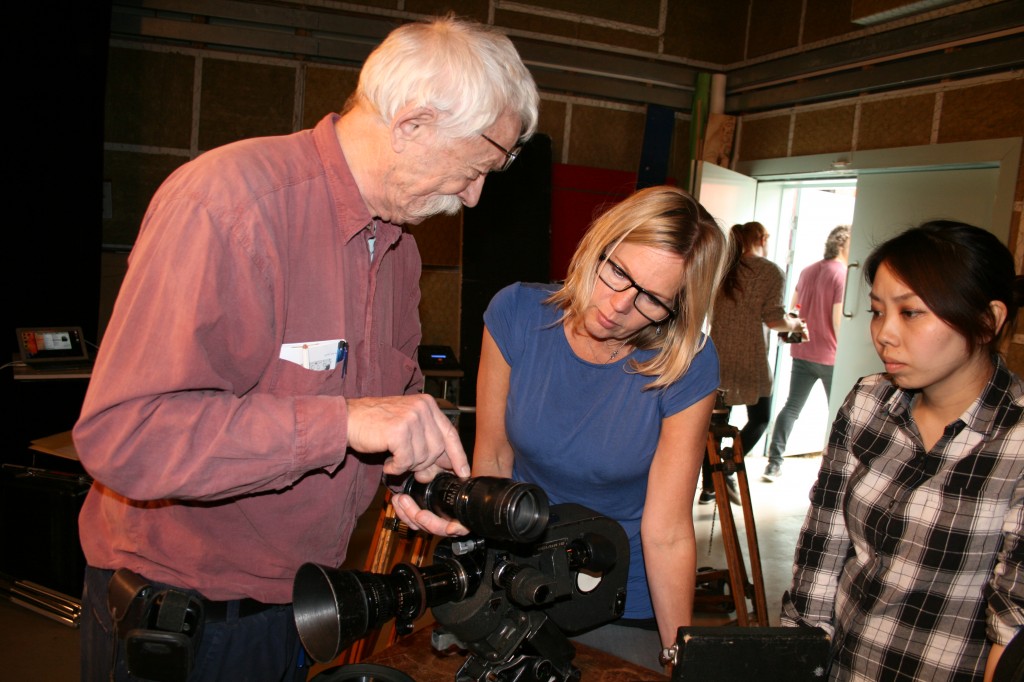
Everything about casting for, filming and even editing together material for the project has been so very different from my producing experience for TV – in an interesting and often deeply inspiring way.
The purpose of the ADAPT project run by Royal Holloway University of London (and funded by European Research Council over 5 years 2013-2018) is to pass on knowledge in a hands on history way about TV and how and why it was made the way it was – in a way that’s never been done before. Strangely non-one has ever reunited people with the kit they once worked with before – filming them as they rediscover, remember and then use that kit again.
I’d of course imagined that finding physically fit and able, yet elderly, former TV crew members with memories in tact might well be tough. But the casting experience was enlightening. I found myself meeting fabulously fit, extraordinarily capable and lucid folk who were fascinated by our Adapt project and keen to take part. All seemed to be going swimmingly well, especially after meeting the wonderful John Adderley who not only owned just the kind of old film cameras and kit we so desperately needed ( and working ones!), but is also so well connected, meaning I was now just a few phone calls away from many of the BBC Ealing studios lot. But then came the stream of calls and emails alerting me to upcoming skiing trips, cruises, sailing commitments and Russian language courses! After an action packed TV career, of course they were all out enjoying adventurous and travel filled retirements! I finally found some dates that worked for most though Producer/Director Ray Sutcliffe did say he might not make it back in time from his Adriatic cruise!
Lucky for me Ray did in fact make it, and I’m eternally grateful as under his direction, the newly reunited film crew most of whom had not seen each other for 20 years or more, proceeded to film with the Éclair camera and Nagra sound kit – using our specially created 1960’s domestic backdrop (thanks to the lovely Royal Holloway art department) to demonstrate how sync sound interviews were achieved back in the late 60s and how decisions were made around lighting, interviewing, filming establishing shots and exterior interview material for what would have been a key section of a documentary of its day made on 16mm film. Watching the professionalism of the crew all respectfully but efficiently supporting each other in their pursuit of best picture, best sound, best lighting, falling back into the language and etiquette of the past ‘ Is that redhead ok for you Dave?’ (Alan Muhley gaffer to cameraman David Whitson), ‘OK for sound Bill?’ (David Whitson to soundman Bill Chesneau), ‘mag loaded’ John Adderly, and most of all, witnessing these guys who have not made a TV programme for over 20 odd years, roll 8 minutes of 16mm film capturing at least 3 minutes of broadcast footage! That’s a ratio of less than 3:1 !
Now given that TV shoots today end up with around 100:1 ratio at least, it’s pretty extraordinary! ‘How on earth editors manage to make any sense of the footage today when there’s no PA on shoot and just acres and acres of the stuff as they just seem to shoot and shoot’ says David Whitson unable to fathom the lack of discipline with shooting since it all went digital,
Ironically for me, this is just what we are doing as we film them … filming!
I come from the discipline of linear TV (mid 80’s it was all still linear) where programmes were pre-scripted and edits were pre approved from ‘paper edits’ and an edited programme never got changed by a commissioner (hard to imagine now!) but here we are for the project, filming almost continuously!
Which is partly why it is actually so very different from producing for TV for me…
The footage which is for the project’s use not for TV broadcast, has to serve a completely different purpose. It is ultimately for educational and research purposes and for academics, historians, media fans, students and telly addicts. As the focus is all about reuniting technicians with equipment they used to work with, the project is intrinsically interested in memory, thus dictating that the reunited crew have the time and freedom to allow memories to be reignited, memories of each other, of the way they worked together, the conditions under which they worked, memories of the kit whether they have or haven’t forgotten how to use it etc (‘Come to daddy’ says Dave Whitson when he first sees the Éclair camera).
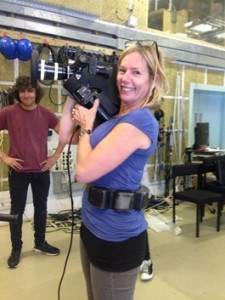
So, when filming I had to resist over producing them and getting them to demonstrate the way I wanted the kit demonstrating or to tell me the fabulous stories they had told me in the pub over a pint etc rather leaving them uninterrupted and with the freedom to feel the kit, to explore how it works, to engage and re-connect with each other… in short to allow their memories to be triggered through the hands on experience rather than from a lot of short sharp pokes at it from a producer like me!
This was clearly a challenge both to me personally (my instinct from producing format and feature shows is to get points across quickly and succinctly) and to our filming methods. I made the decision that the best way to cover the actions of up to 7 people moving around and a whole load of kit , was to shoot it all handheld so we could come to the action rather than expect any of it to come to us– and supplemented 2 hand held camera with 2 fixed cameras overhead to give us some general wide shots of the scene.
Our poor two camera guys Joe Burns and Zak Derkler who were brilliant, are probably still having massages having barely had a moment to put the cameras down. No gym for them for many weeks to come!

I’m not quite sure I should say this, but I think our young crew tired well before our old crew who were so energized by the reunion and experience I think. Long after calling ‘cut’ they carried on sharing memories and playing with the kit, we kept having to pick up cameras and keep rolling!
Now for one of the biggest challenges of the project- making sense of and editing the footage!
Having encouraged the reunited film crew to indulge in memory and hands-on experience with the kit, the edit challenge is proving so very different to TV editing where short succinct sync bites and simple narrative rule! For Adapt I’ve got to wade through 1TB of material… that’s around 15 hours of footage with 7 people often talking all over each other, sometimes demonstrating sometimes ‘presenting’ to an imaginary audience, sometimes getting on with filming, sometimes explaining it, often using old familiar jargon, often walking off camera or asking for a chair or standing listening to others.
But as challenges go it’s a rather lovely challenge…
As I listen to those amazing stories… ‘we were so lucky to find a donkey at four in the morning in Cairo’ ( Alex Branson)
She called me by the way to let me know it was actually Luxor…
Amanda Murphy is Digital Producer on the ADAPT project.
The original version of this post incorrectly stated that Ray Sutcliffe is 90 years old. This is not the case and this post was edited on 21 December 2015 to correct this error.
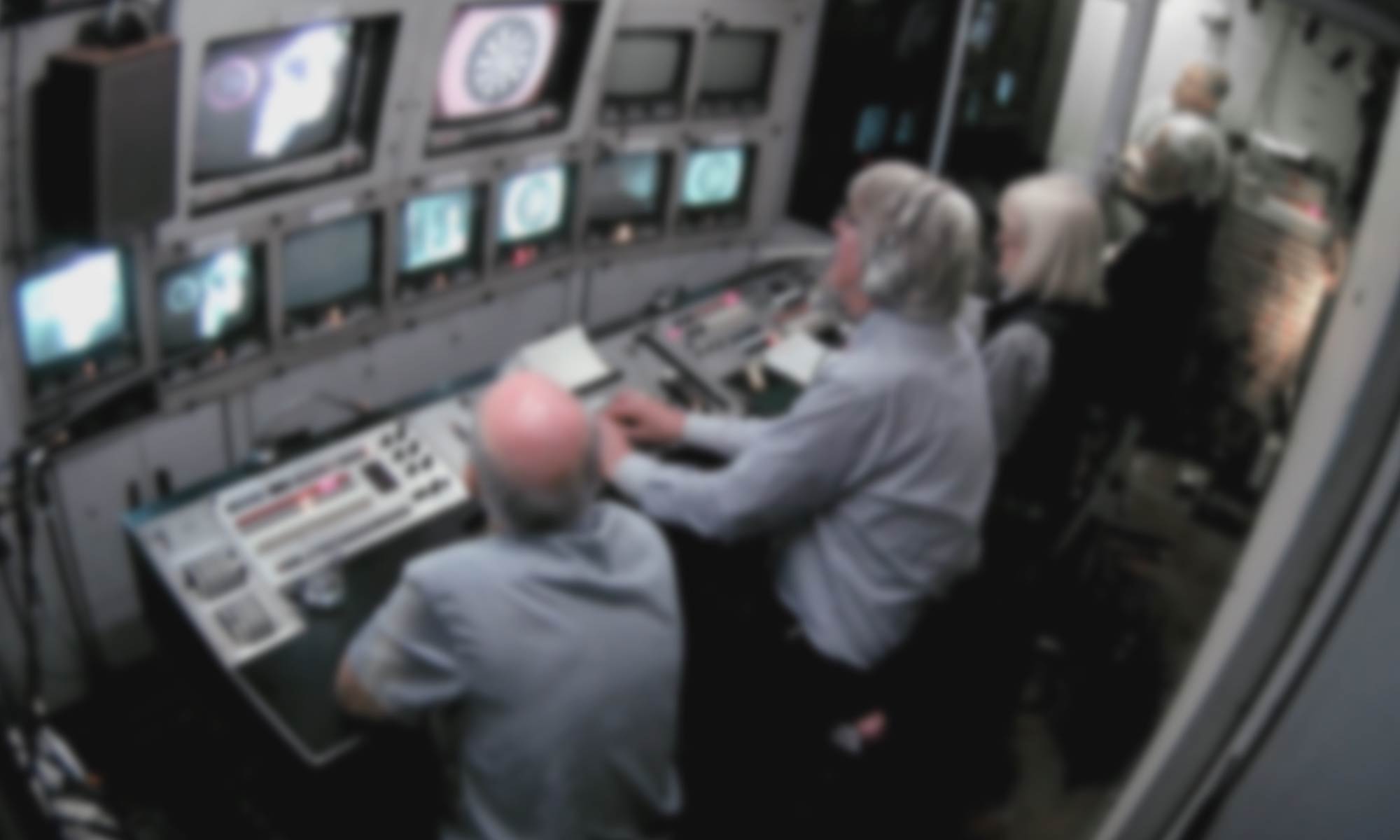
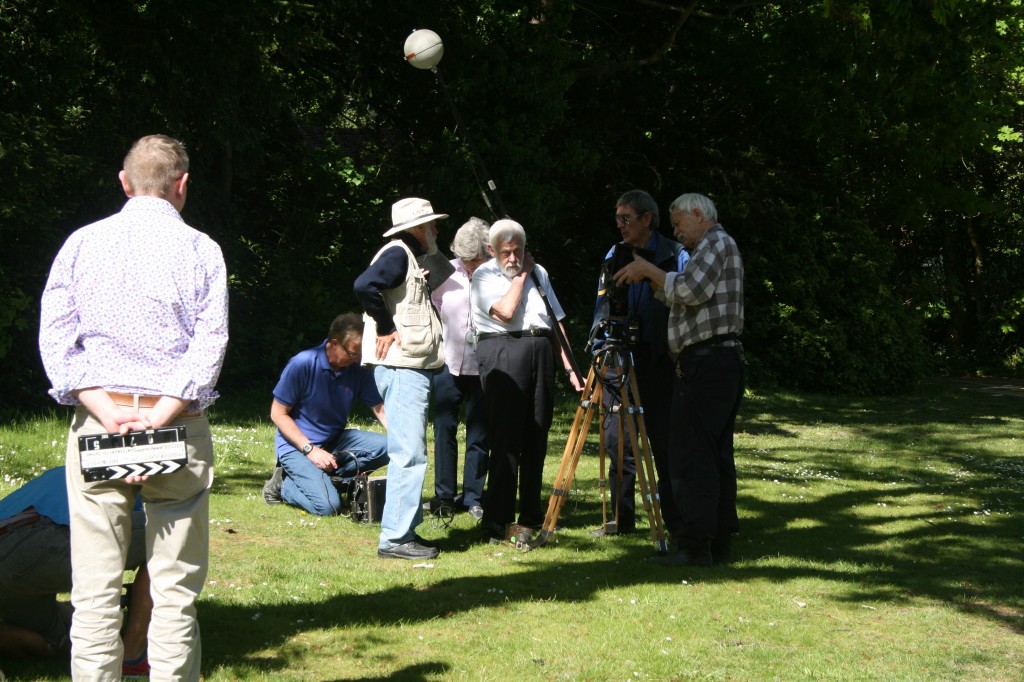
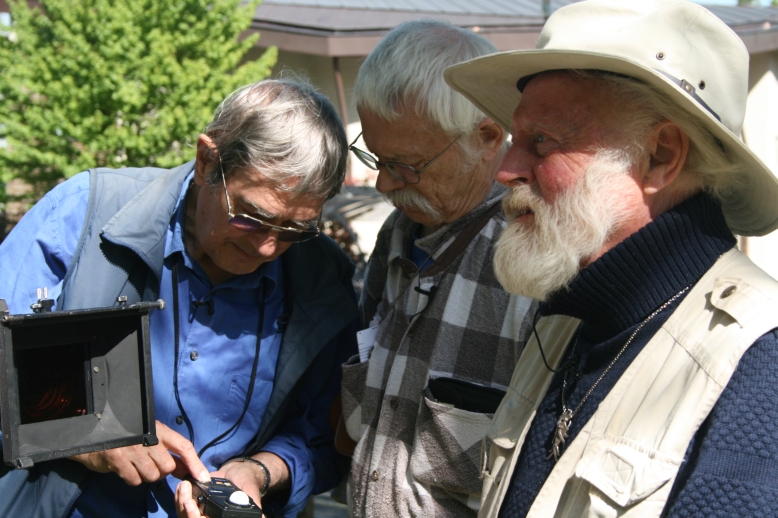
2 Replies to “Life-affirming filming with octogenarians from BBC Ealing Studios”
Comments are closed.